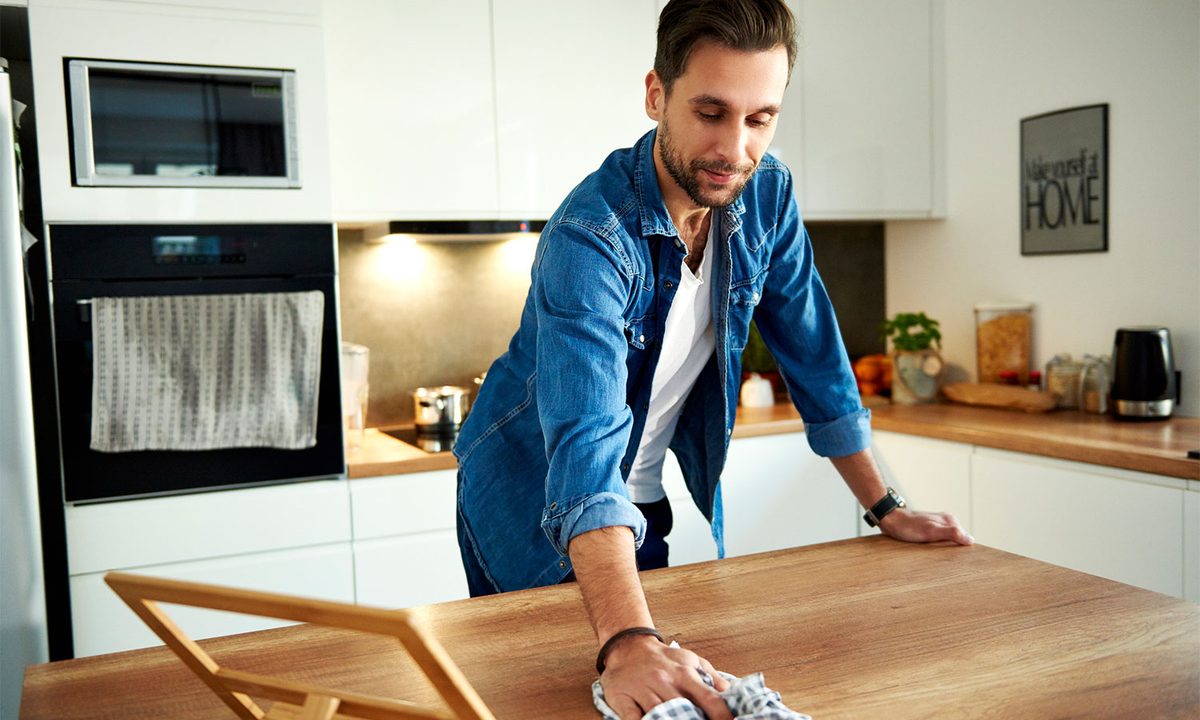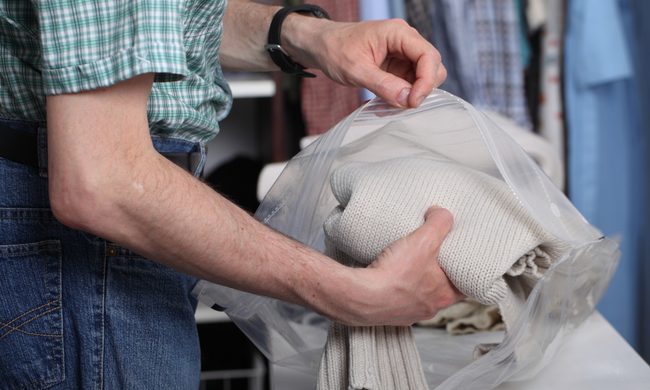Nothing quite beats butcher block countertops, especially when it comes to affordability and durability. In your beautiful kitchen, accidents and spills are bound to happen, so it’s important to take care of these countertops, remove stains promptly, and keep them looking gorgeous for years to come. We'll walk you through how to remove stains from butcher block countertops in this handy guide.
Even if you’re just seeing lighter stains from daily food preparation, it’s still important to address them right away with clean, natural solutions. The stain will get harder to lift the longer it sits, so getting rid of even these little stains is important. Keep reading to find out how to remove stains from butcher block countertops.

Lighter stains: The salt and lemon method
Salt is a mildly abrasive but food-safe substance that will lift the stain without damaging the wood. Lemon is a favorite among natural cleaning products due to its fresh and invigorating scent, and its high acidity is highly effective at lifting many types of stains.
Step 1: Sprinkle salt on the stain.
Step 2: Cut a lemon in half and squeeze a bit of juice onto the stain.
Step 3: Rub the pulp side of the lemon over the salted area.
Step 4: Leave the solution on your counter overnight.
Step 5: Use a damp cloth to wipe the area clean.
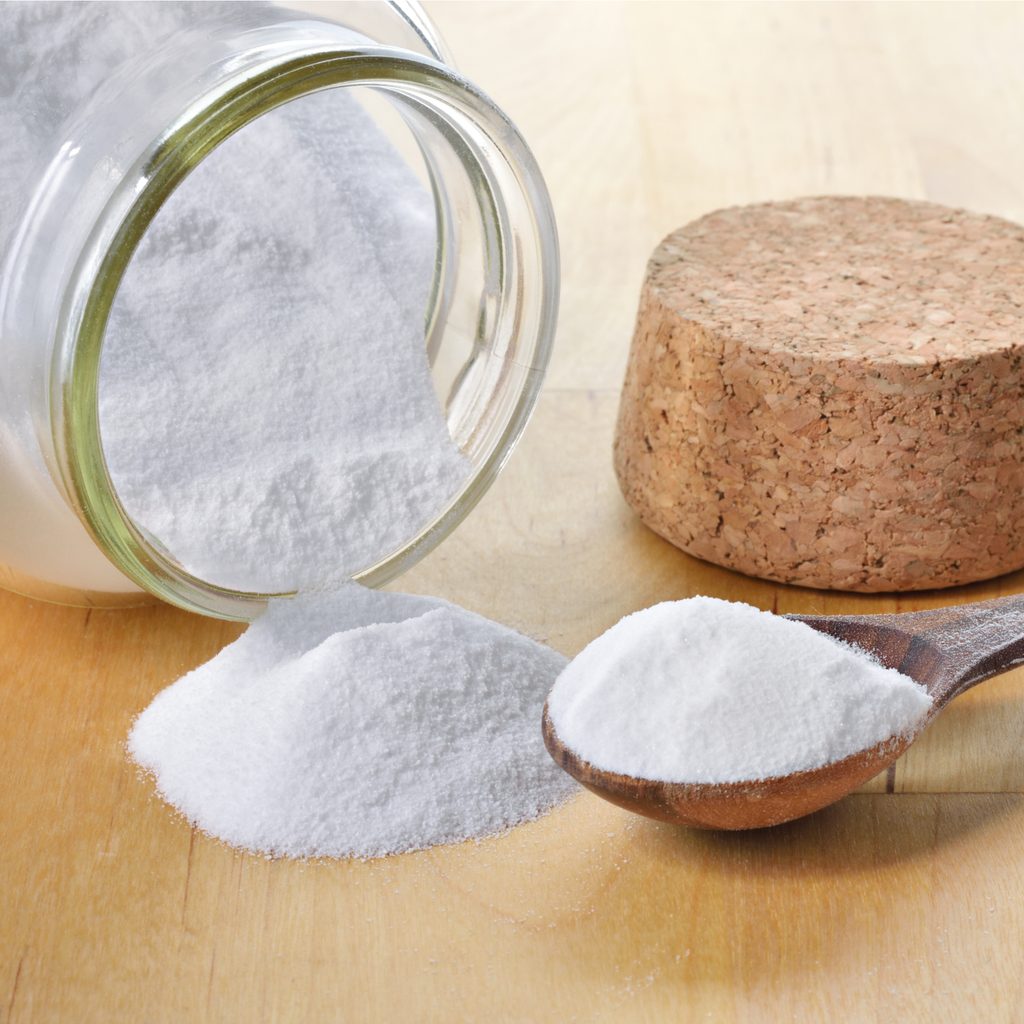
Lighter stains: The baking soda and vinegar method
This method is particularly effective on fresh stains that haven’t had much of a chance to soak into the wood. Baking soda is great for stain removal since it will not only soak up the staining substance but will also neutralize the odors associated with it. Finishing it off with vinegar will clean and disinfect the surface once the stain has been lifted.
Step 1: Sprinkle the baking soda onto the surface of the stain and rub it in gently.
Step 2: Let the baking soda sit for several hours.
Step 3: Dampen a clean cloth with vinegar and rub the area until the stain lifts.
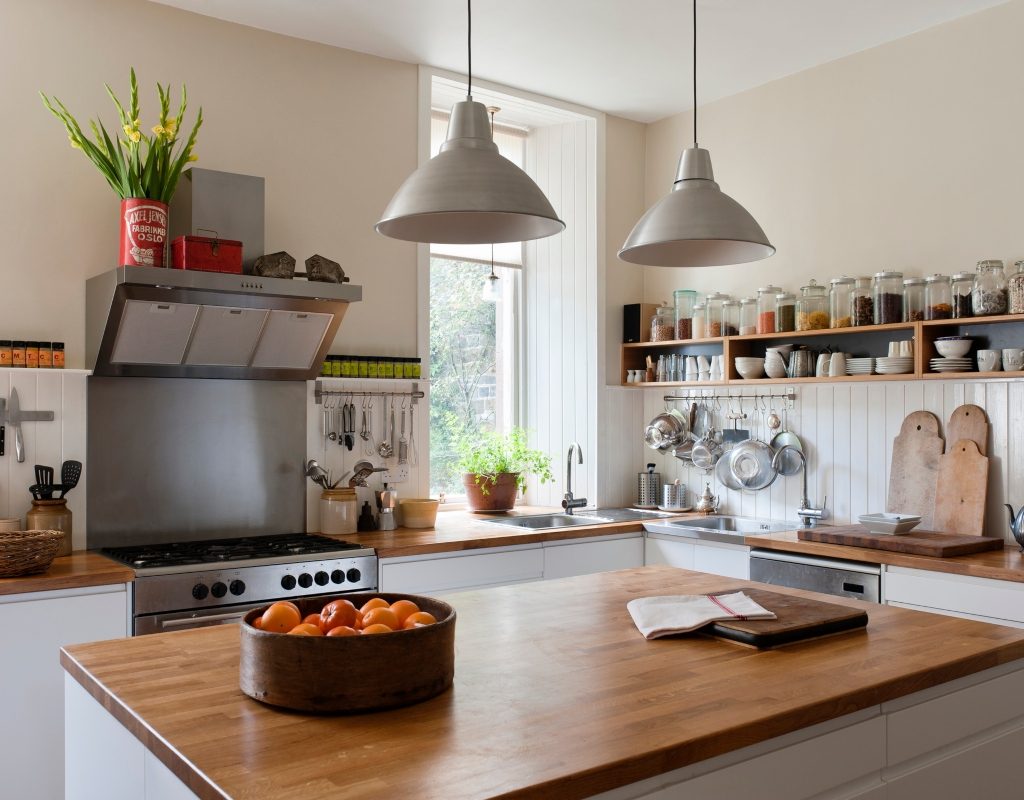
For tougher stains
When it comes to deeper stains like those from red wine or berries, you may need to adopt a more vigorous approach. If you find that the stain you’re working with is too stubborn for the solutions mentioned above, try some of these stain-removing methods.

Hydrogen peroxide and water method
Hydrogen peroxide is a tough soldier when it comes to lifting stains. It effectively loosens and lifts the stain’s particles, and the solution is antibacterial with anti-fungal properties so it will sanitize the area as well. To top it off, hydrogen peroxide dries the stained area quickly, so you can avoid warping or damaging the wood with moisture.
Step 1: Combine 1 cup of water with 1 tablespoon of hydrogen peroxide.
Step 2: Moisten a cotton ball or the tip of a clean rag with the solution.
Step 3: Firmly dab the stained area with the mixture until the stain lifts.
Step 4: Wipe the spot clean with a rag dampened with clean water.

Sanding and oiling method
If all of these stain-removing hacks fail to remove that stubborn spot, you may need to resort to sanding and refinishing. This will essentially remove a thin layer of wood from the top of the countertop, taking the stained portion with it. Finishing it with mineral oil will re-seal the wood exposed by the sanding and protect it from further staining.
Step 1: Use a strip of coarse sandpaper to sand away the stained area.
Step 2: Smooth the sanded area with a strip of finer sandpaper.
Step 3: Apply mineral oil directly to the countertop and wipe it around with a clean, dry cloth.
Step 4: Let the first coat of mineral oil set for 30 minutes before applying a second coat of oil.
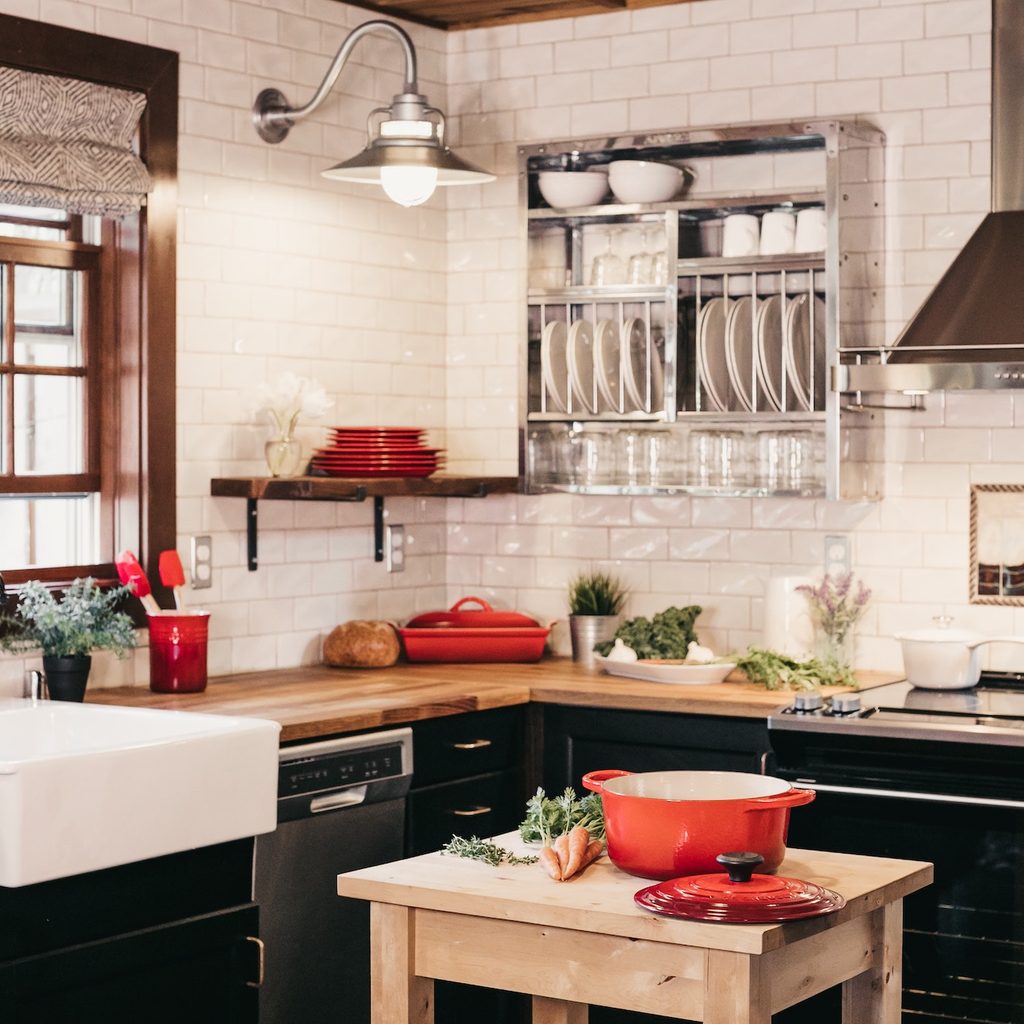
Can you use commercial cleaners on a butcher block countertop?
While mineral oil is the go-to choice for maintaining butcher block countertops, there are some commercial cleaners that are specifically designed for wood surfaces, including butcher blocks. So, yes, you can use commercial cleaners, but you need to be a little careful with your selection.
When picking a commercial cleaner, make sure it's labeled as safe for use on wood, especially butcher block. Some general wood cleaners may contain harsh chemicals that could harm the wood or leave a residue that's not food-safe.
Look for cleaners that are non-toxic and free from harmful ingredients like bleach or ammonia. Natural and eco-friendly options are usually a safe bet. Always read the instructions on the cleaner's label to ensure it's suitable for use on your particular type of wood.
Before you go all-in with a commercial cleaner, do a spot test on a less noticeable area of your butcher block countertop. This way, you can make sure it won't cause any discoloration or damage to the wood.

What should you not use on a butcher block countertop?
When cleaning or removing stains from your countertop, you should avoid using:
- Harsh chemicals: Bleach or ammonia-based cleaners can strip the wood’s natural oils and damage the surface.
- Excessive moisture: Steer clear of soaking the wood in water or leaving it wet for extended periods, as excessive moisture can lead to warping, cracking, or mold growth.
- Rough cleaning tools: Never use steel wool or abrasive scrubbers, which can scratch and degrade the finish.
- Oil-based substances: Avoid applying vegetable oils like olive or coconut oil since they can turn rancid and create unpleasant odors.
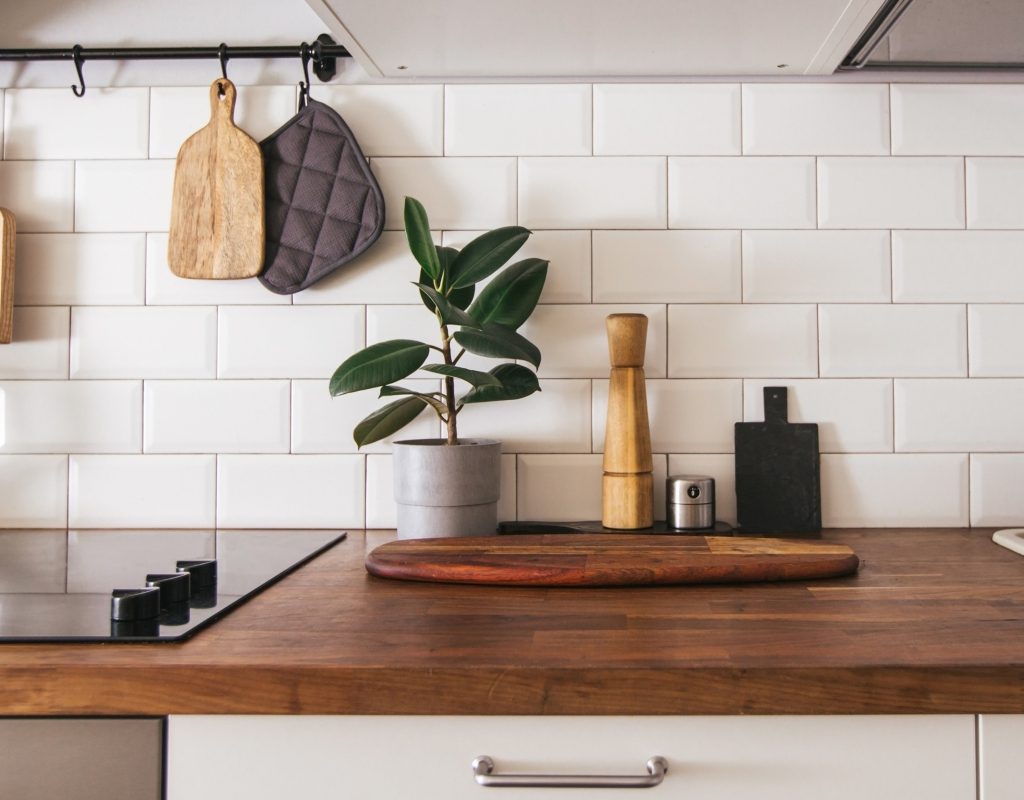
Preventing stains with everyday practices
The old saying is true: An ounce of prevention is worth a pound of cure. By incorporating a few small changes in your kitchen, you can reduce, and possibly prevent, pesky stains in the future.
Clean up spills immediately.
Since wood is porous, it absorbs liquids quickly and will, therefore, stain easily. Liquid also tends to warp wood so leaving a spill on the countertop for too long can cause a bit of visual damage. When you spill, clean up the liquid as quickly as possible using a dry or damp cloth, depending on how much liquid there is. Also, avoid leaving wet rags, cups, or dishes with condensation on the surface of your butcher block countertop. Use protective surfaces like coasters and cutting boards to keep these dishes from coming into contact with the table.
Change up your prep location.
If you’re a creature of habit, you probably prepare your food in the same spot every day. With all the chopping and other action your prep spot sees, it will wear down quickly and start to expose the wood underneath the layer of protective finish. Do your countertop a favor and change up your prep spots often.
If you spend a lot of time in the kitchen, your butcher block countertop likely sees its fair share of use. When it comes to keeping those wooden surfaces pristine, stains are certainly the enemy. With a few easy cleaning hacks that you can whip up from household items, you can banish stains and keep your butcher block countertop looking brand new.
